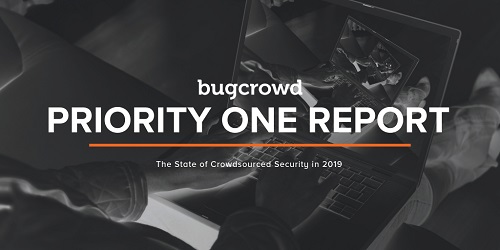Bugcrowd, a leader in crowdsourced cybersecurity, released its 2022 Priority One report to spotlight key cybersecurity trends of the past year, including the rise in the adoption of crowdsourced security due to the global shift to hybrid and remote work models, and the rapid digital transformation associated with it.
The report reveals the strategic focus for many organizations across industries has shifted, with the emphasis now on clearing residual security debt associated with that transformation. In particular, financial services companies on Bugcrowd’s platform experienced a 185 percent increase in the last 12 months for Priority One (P1) submissions, which refer to the most critical vulnerabilities.
According to activity recorded on the Bugcrowd trademarked Security Knowledge Platform, high-level trends included an increase in ransomware and the reimagining of supply chains, leading to more complex attack surfaces during the pandemic.
Ransomware overtook personal data breaches as the threat that dominated cybersecurity news across the world in 2021. Global lockdowns and remote work caused a rush to put more assets online, which led to an increase in vulnerabilities. In turn, security buyers invested heavily to incentivize ethical hackers to find critical threats, causing P1 and P2 bugs to make up 24 percent of all valid submissions for the year.
In the past, Advanced Persistent Threats (APTs) were defined by advanced tactics and clandestine operations, but this approach started to shift in 2021 toward more commonplace tactics such as so-called N-day exploits, which are attacks on known vulnerabilities. Diplomatic norms around hacking have weakened to the point where nation-state attackers are now less concerned with being stealthy than in the past.
Some top highlights from the 2022 Priority One Report include:
- Cross Site Scripting was the most identified vulnerability type
- Sensitive Data Exposure moved up to No. 3 from No. 9 on the list of Top 10 most identified vulnerability types
- Ransomware went mainstream, and governments responded
- Supply chains became a primary attack surface
- Penetration testing entered a renaissance
2021 was the year vulnerability disclosure became a major concern for government agencies in particular. Total valid submissions in the government sector were up 1,000 percent for the year. Most submissions occurred in the third quarter, as government buyers invested in crowdsourced security in response to federal civilian agency directives that made vulnerability disclosure a key requirement.
In the financial Services and software sectors, the report documents increased levels of ethical hacker activity as a function of making up for a long tail of security debt. It also shows increased severity levels and higher payouts to incentivize the discoveries made by security researchers.
Accelerated digital transformations increased efforts to strengthen security postures, as a greater share of revenue came from online transactions. Financial services companies had to move quickly on this issue due to the sector’s critical importance for businesses and consumers. Valid submissions were up 82 percent across the FinServ sector.
In addition, researcher payouts for discoveries grew 106 percent in FinServ. In the Software sector – a bellwether for the cybersecurity ecosystem as a whole – total researcher payouts were up by 73 percent, reflecting the increasingly impactful nature of validated bugs.
Click here to download a copy of the full report.










